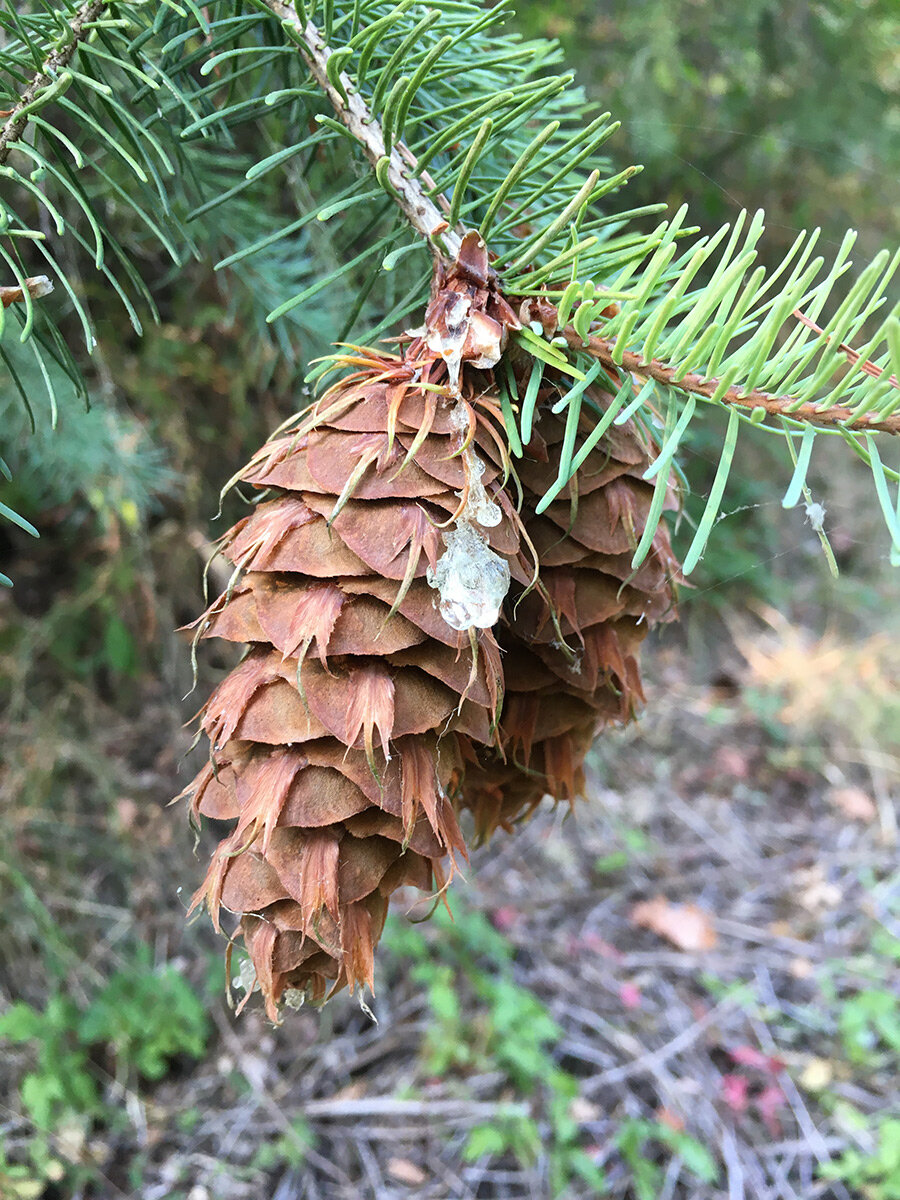Douglas-fir (Pseudotsuga menziesii), Pine Family (Pinaceae)
Description
This is the state tree of Oregon. This tree commonly lives for 500 years and can achieve over a 1000 years old. Certain trees have become giants at heights of 350 to 400 feet with trunk diameters up to 15 to 20 feet!
Needles
Needles
The buds are pointed and a warm, reddish-brown with overlapping scales. They look lacquered with a smooth, shiny finish.
The needles are evergreen. They are a dark yellow-green to blue-green in color above with two white bands underneath. They are spirally arranged but may be two-ranked in the shade. They are 3/4 - 1 1/4” long with a blunt tip.
Cones
Male: Tree limbs can be laden with these cones and produce copious amounts of yellow pollen. They are about a 1/2” when they form and about an inch as they open to release their pollen.
Female: A woody, reddish brown cone hanging down that is 3 - 4” long. There is a distinct 3-forked bract tucked under rounded scales. It looks like the back half of a mouse (back feet and tail) scurrying underneath to hide.
I found where a squirrel had opened a cone. Each scale has a pair of seeds. The seed has a small, papery wing attached.
Bark
Bark on young trees is smooth, gray and contains numerous resin blisters. On mature trees, it becomes thick and deeply furrowed. It reminds me of lava. The gray, thick crust is the surface of the lava cooling and the reddish bark seen in the fissures is still molten.
Resin
In researching about resin, I quickly came upon the difference between sap and resin. Sap is the watery fluid that transports nutrients throughout the tree’s vascular system. Some trees, like the Douglas-fir, produce resin. In the Douglas-fir the resin is made by cells lining special tubes in the tree called resin ducts. Resins help the tree defend itself from insects when they bore into a tree by trying to encasing the insect with resin. You’ll also see resins produced when a tree becomes damaged. Resins have anti-microbial properties and make a great sealant which helps to seal the wound and protect it from diseases. In this photo, you see resin weeping from the base of the fir cone. Maybe this is done to try to deter insects or animals from eating the seeds. Somehow the squirrels seem to be able to work around all this sticky resin without getting it all stuck on their hands and face.
Life in a Douglas-fir
The first two images show a robin’s nest that was built out on a limb. The third and fourth photos show the work of pileated woodpecker extracting insects like carpenter ants or wood-boring beetle larvae.
Photo Location:
Mt. Pisgah Arboretum
Mt. Pisgah Arboretum Plant List
Eugene, OR
Height: 80 - 200’, old growth 350 - 400’
Diameter: 2 - 5’, old growth 15 - 20’
Bark: Reddish-brown, deeply furrowed


















